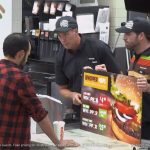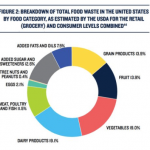The Whole Foods Playbook For Reaching New Markets
When the first 365 by Whole Foods Market location opens on May 25 in the Silver Lake neighborhood of Los Angeles, Whole Foods fans will recognize the new grocery store’s quality standards, but not much else: Gone will be the seemingly endless selection of olive oils, the expert cheesemongers, and the artful displays of seasonal produce, single-origin coffee beans, and natural cosmetics. In their place will be simple design, streamlined product offerings—and markedly lower prices. “We’re like Whole Foods’ scrappy kid sister or brother,” says Jeff Turnas, the 21-year Whole Foods veteran at the new brand’s helm.
Launching 365 is a huge strategic move for the Austin-based company. As organic and natural food continues its mainstream spread, Whole Foods, which developed its signature foodie-focused shopping experience throughout the ’90s and aughts, is facing competition from value-minded stores like Trader Joe’s, Sprouts, and Fresh Market, which cater to younger and less affluent shoppers. With Whole Foods’ same-store sales declining (they were down 1.8% in the first quarter of 2016), the company is hoping its new brand will appeal to a broader demographic and fit into neighborhoods that might not support a higher-end store. And if 365 teaches the company a thing or two about cost efficiency, all the better. “Imagine that Whole Foods Market is like a large cruise ship,” says co–CEO John Mackey. “It’s not that easy to turn a cruise ship. You can do it, but it takes time: 365 doesn’t have anything it has to overcome.”
To pilot this new, agile boat, Mackey looked to Turnas, who started his career at Whole Foods as a beer buyer in 1995 and worked in five different territories before becoming president of the U.K. region in 2009. While there, he introduced partnerships that let popular restaurants operate inside his stores and pulled the cheesemonger out from behind the counter to interact more with customers. “Jeff led [the U.K.] entrepreneurially,” says Whole Foods Market executive VP of operations David Lannon. “We felt that he would have that same independent spirit when we launched this brand.” Last summer, Turnas moved to Austin and was given about a year to create an entirely new retail concept.
He began with the stores’ basic design. While Whole Foods markets are built from scratch to reflect the communities in which they’re located, Turnas and his team created store formats that can be easily replicated across the country. “At Whole Foods, cookie-cutter is kind of a bad word,” Turnas says. “At 365, we love it because it allows us to be efficient and meet our goal of getting healthier food to more people.” The aim is for each 365 store to cost about half as much to build as a Whole Foods Market. Averaging about 30,000 square feet each, they’ll also be significantly smaller.
Getting the product mix right has been key. Whereas Whole Foods prides itself on variety, Turnas whittled offerings down to what was most essential and affordable, which allows for a more streamlined central-ordering system. Nearly 50% of the nonperishable items will come from Whole Foods’ own lower-cost 365 label. The rest will be rigorously selected. A regular Whole Foods store, for instance, might carry 20 or 30 brands of water. In its efforts to keep prices lower, 365 plans to carry just four. Turnas and his team applied this approach—what they call “thoughtful simplicity”—to everything from store design to product displays.
But even with a focus on value, Turnas found a way to keep some of Whole Foods’ flair in his new brand. He developed a “Friends of 365” program that installs third-party vendors inside the stores, similar to the partnerships he launched in the U.K. “With our lower-labor, lower-cost model, we can’t do everything,” he says. “So why not allow others to do it?” The Silver Lake store features a café by Allegro Coffee Company that sells both coffee and tap beer, and By Chloe, a New York City–based vegan-burger restaurant.
“Our hope is that, as we grow, we can put these [365] stores all over,” Turnas says, “and put them in places where Whole Foods would never be able to go.” The company expects to launch three 365 stores by the end of the year (next up: Lake Oswego, Oregon; and Bellevue, Washington) and another 10 in 2017. But the ambition for the project is much larger. “We have to adapt Whole Foods to the future, and we can use 365 as an inspiration,” Lannon says. In other words, you may have Turnas to thank if you start finding a little more value at your local Whole Foods, too.
A version of this article appeared in the June 2016 issue of Fast Company magazine.
Fast Company , Read Full Story
(23)













